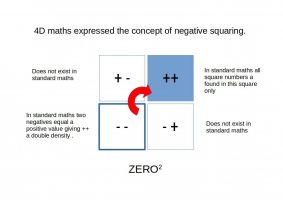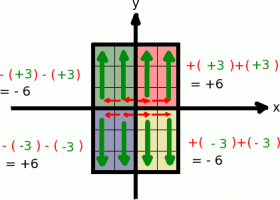In2infinity
New member
- Joined
- Apr 20, 2022
- Messages
- 8
Hello there.
I was looking for an answer to a very simple question that is playing on my mind.
I can make a cross to form an x ,y axis, with zero at the center. I can label each half of the number line with positive or negative opposites. If I perform a calculation such as +2x * +3y I get a rectangle in the ++ space. And if I calculate -2x * -3y I get a rectangle in the - - space.
By when I try to explore this on my calculator it never shows me the right answer. As -x * -y seems to equal a positive value?
Why?
I was looking for an answer to a very simple question that is playing on my mind.
I can make a cross to form an x ,y axis, with zero at the center. I can label each half of the number line with positive or negative opposites. If I perform a calculation such as +2x * +3y I get a rectangle in the ++ space. And if I calculate -2x * -3y I get a rectangle in the - - space.
By when I try to explore this on my calculator it never shows me the right answer. As -x * -y seems to equal a positive value?
Why?


